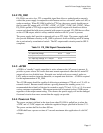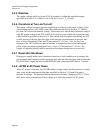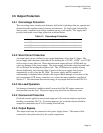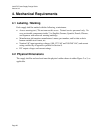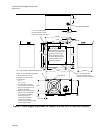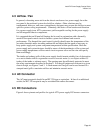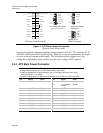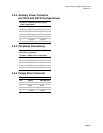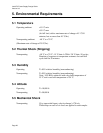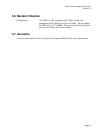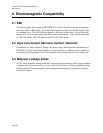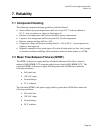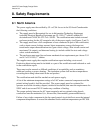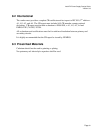
Intel ATX Power Supply Design Guide
Version 0.9
Page 30
8. Safety Requirements
8.1 North America
The power supply must be certified by UL or CSA for use in the USA and Canada under
the following conditions:
• The supply must be Recognized for use in Information Technology Equipment
including Electrical Business Equipment per UL 1950, 3
rd
edition, without D3
deviations and CAN/CSA C22.2 no. 950-95. The certification must include external
enclosure testing for the AC receptacle side of the power supply (see Figures 2 and 3).
• The supply must have a full complement of tests conducted as part of the certification,
such as input current, leakage current, hipot, temperature, energy discharge test,
transformer output characterization test (open circuit voltage, short circuit current and
maximum VA output), and abnormal testing (to include stalled fan tests and voltage
select switch mismatch).
• The enclosure must meet fire enclosure mechanical test requirements per clauses 2.9.1
and 4.2 of UL 1950, 3
rd
edition.
The supplier must supply the complete certification report including a test record.
Production hipot testing must be included as a part of the certification and indicated as such
in the certification report.
There must not be unusual or difficult conditions of acceptability such as mandatory
additional cooling or power derating. The insulation system shall not have temperatures
exceeding their rating when tested in the end product.
The certification mark shall be marked on each power supply.
A list of the minimum temperature ratings of all AC mains connected components and the
printed wiring board(s) shall be provided. The power supply must be evaluated for
operator-accessible secondary outputs (reinforced insulation) that meet the requirements for
SELV and do not exceed 240 VA under any condition of loading.
The proper polarity between the AC input receptacle and any printed wiring boards
connections must be maintained (i.e., brown=line, blue=neutral, green=earth/chassis).
Failure of any single component in the fan speed control circuit shall not cause the internal
component temperatures to exceed the abnormal fault condition temperatures per IEC 950.




